The Bahama Woodstar (Nesophlox evelynae) emerges as a jewel among the avian treasures of the Bahamas and neighboring islands.
This enchanting hummingbird, with its diminutive stature and vibrant plumage, captivates bird enthusiasts and nature lovers alike.
Males, adorned with iridescent green and violet feathers, boast a striking violet crown and a reddish-pink throat, creating a visual spectacle in flight.
As a member of the Trochilidae family, the Bahama Woodstar is characterized by its proficiency in hovering near flowers, and delicately extracting nectar with its specialized bill.
Its intricate courtship displays and agile aerial maneuvers during the breeding season add to its allure.
Beyond its aesthetic charm, understanding the Bahama Woodstar’s behavior, nesting habits, and its crucial role in pollination deepens the appreciation for this charismatic species
It is also a symbol of the rich biodiversity of the tropical island ecosystems it calls home. Stay focused.
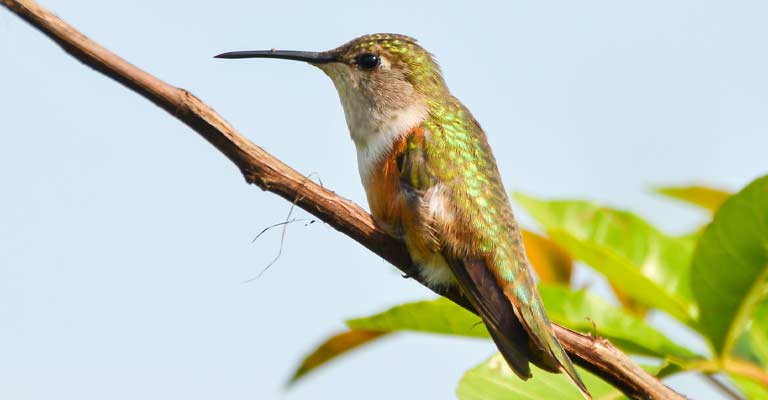
Identifying Characteristics of Bahama Woodstar
The Bahama Woodstar (Calliphlox evelynae) is a small and captivating hummingbird species native to the Bahamas and some neighboring islands.
Identifying this unique bird involves paying attention to its distinctive physical characteristics, behavior, and habitat.
Physical Characteristics
The Bahama Woodstar is a diminutive hummingbird, measuring about 8 to 10 centimeters in length. One of its most striking features is the vibrant plumage.
Males typically sport iridescent green and violet feathers on their upperparts, with a distinctive violet crown on their heads.
Their throats showcase a brilliant reddish-pink color, making them easily distinguishable. In contrast, females exhibit more subdued colors, often with greenish-brown upperparts and a pale throat.
Wings and Tail
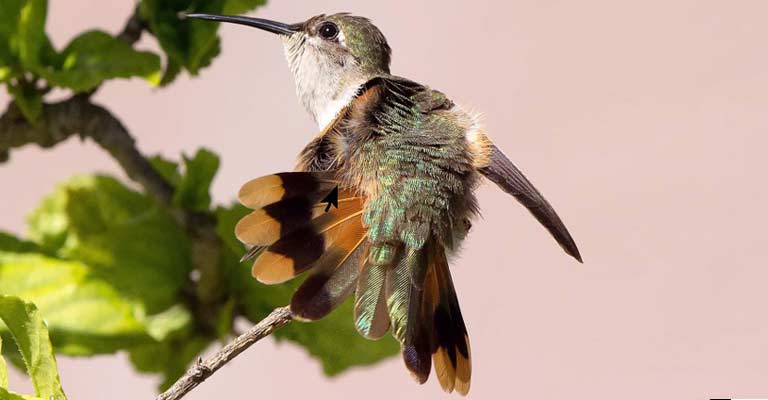
Observing the wings and tail is crucial for identification. The wings of the Bahama Woodstar are relatively short and rounded, allowing for agile and precise flight.
Additionally, their tails are forked, with outer feathers extending beyond the central ones. This tail shape aids in maneuverability and contributes to their graceful flight patterns.
Behavioral Traits
Understanding the behavior of the Bahama Woodstar is integral to identification. These hummingbirds are known for their energetic and acrobatic flight.
They hover near flowers, using their long bills to extract nectar. Their rapid wing beats create a distinct humming sound, adding to their charm. These birds are also territorial and may engage in aerial displays to establish dominance.
Habitat and Range
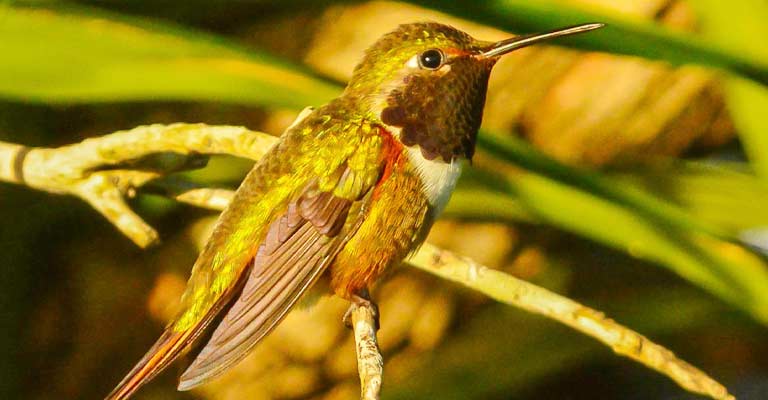
The Bahama Woodstar is primarily found in subtropical or tropical dry forests, coastal scrublands, and gardens. Knowing their preferred habitat is essential for birdwatchers seeking to identify them.
Their range includes the Bahamas, as well as some nearby islands in the Caribbean. These birds may also be observed in lowland areas with suitable flowering plants.
Distinctive Vocalizations
While visual cues are important, recognizing the vocalizations of the Bahama Woodstar can aid in identification. Their calls are often high-pitched and rapid, resembling a series of sharp chirps.
Birdwatchers should listen for these distinctive sounds when trying to locate or confirm the presence of these hummingbirds in a particular area.
Identifying the Bahama Woodstar involves a comprehensive understanding of its physical characteristics, behavior, habitat, and vocalizations.
Birdwatchers who familiarize themselves with these key features will enhance their ability to recognize and appreciate this enchanting hummingbird species in its natural environment.
Taxonomy of Bahama Woodstar
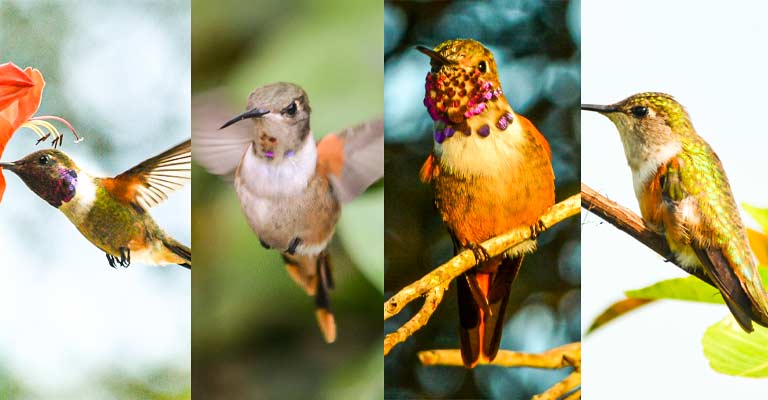
Here’s a table detailing the taxonomy of the Bahama Woodstar (Nesophlox evelynae):
| Taxonomic Level | Classification |
| Domain | Eukaryota |
| Kingdom | Animalia |
| Phylum | Chordata |
| Class | Aves |
| Clade | Strisores |
| Order | Apodiformes |
| Family | Trochilidae |
| Genus | Nesophlox |
| Species | N. evelynae |
The Bahama Woodstar’s taxonomy reflects its place in the broader classification of living organisms, from the domain level down to its specific species within the genus Nesophlox.
Understanding its taxonomy helps place this hummingbird within the context of avian diversity and evolutionary relationships.
The Bahama Woodstar (Nesophlox evelynae) belongs to the Animalia kingdom, Chordata phylum, and Aves class. It falls within the Strisores clade and the Apodiformes order.
As a member of the Trochilidae family, it shares its taxonomic family with other hummingbirds. The genus of this enchanting bird is Nesophlox, and its specific species is N. evelynae.
This taxonomy places the Bahama Woodstar among eukaryotic, chordate, and avian organisms, highlighting its unique position in the intricate web of life and emphasizing its evolutionary connections with other bird species.
Bahama Woodstar Life History
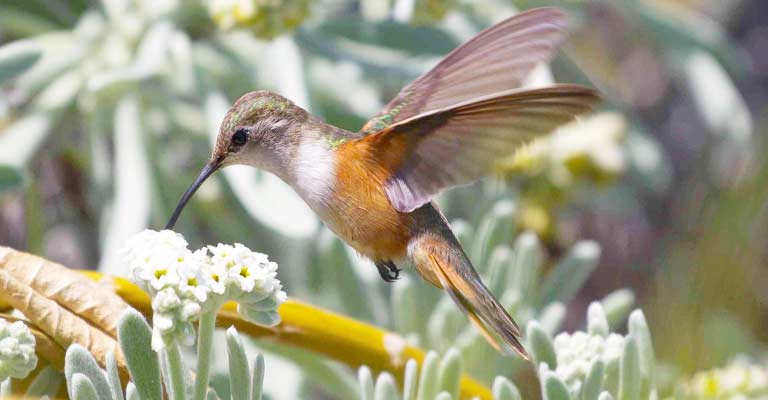
The Bahama Woodstar (Calliphlox evelynae) is a captivating hummingbird species with a fascinating life history.
From its feeding habits to nesting behavior, understanding the various facets of its life cycle provides insights into the ecological role of this small avian wonder.
Food
The primary diet of the Bahama Woodstar revolves around nectar from a variety of flowering plants. With their specialized long bills and extendable, tube-like tongues, these hummingbirds can reach deep into blossoms to extract nectar.
Additionally, they may also consume small insects and spiders, providing essential proteins and nutrients to supplement their energy-intensive nectar-based diet.
Habitat
Bahama Woodstars inhabit subtropical or tropical dry forests, coastal scrublands, and gardens. These environments provide an abundance of flowering plants, which are crucial for their foraging activities.
The availability of suitable habitats plays a significant role in sustaining populations of these hummingbirds.
Range Map
The range of the Bahama Woodstar includes the Bahamas and nearby islands in the Caribbean.
Consultation of a range map is valuable for bird enthusiasts and conservationists, helping to track the distribution of these hummingbirds and assess the impact of potential threats to their populations.
Nesting
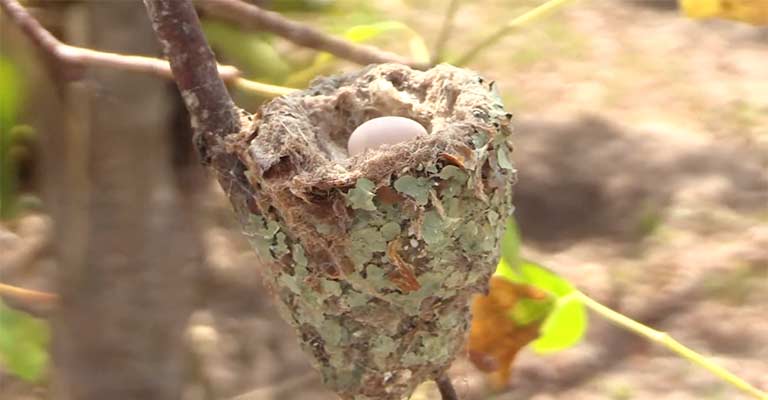
During the breeding season, female Bahama Woodstars construct tiny cup-shaped nests typically situated in low shrubs or trees.
These nests are skillfully woven from plant fibers, spider silk, and other fine materials, camouflaging them amidst the foliage.
The meticulous construction of nests reflects the dedication of these hummingbirds to ensuring the safety and well-being of their offspring.
Here’s a table detailing the nesting characteristics of the Bahama Woodstar:
| Nesting Details | Bahama Woodstar |
| Clutch Size | Typically 2 eggs per clutch |
| Number of Broods | Often raises a single brood |
| Egg Length | Approximately 1 centimeter |
| Egg Width | Around 0.5 centimeters |
| Incubation Period | 15 to 19 days |
| Nestling Period | About 20 days |
| Egg Description | Small, white, and elongated |
| Nest Construction | Cup-shaped, woven with plant fibers and spider silk |
| Nest Placement | Positioned in low shrubs or trees, often well-camouflaged |
| Parental Care | Both males and females contribute to incubation and care for the nestlings |
Understanding these nesting details provides valuable insights into the reproductive biology and parental behaviors of the Bahama Woodstar, contributing to the overall knowledge of this fascinating hummingbird species.
Breeding
Breeding behavior involves intricate courtship displays by males, showcasing their vibrant plumage and engaging in aerial acrobatics.
After successful mating, females lay two small white eggs, and the incubation period lasts for about 15 to 19 days.
The fledglings are then nurtured in the carefully crafted nests until they are ready to embark on their first flights.
Diseases
While the Bahama Woodstar faces natural challenges, they are susceptible to diseases that can impact their populations.
Common avian diseases, including those transmitted by mosquitoes or other vectors, may pose a threat. Monitoring the health of these hummingbirds is crucial for their conservation.
Treatment
In the event of disease outbreaks, conservation efforts may include providing medical treatment to affected individuals.
Intervention strategies could involve collaboration between wildlife veterinarians, biologists, and conservation organizations to implement appropriate medical care and prevent the spread of diseases within Bahama Woodstar populations.
Conservation
Conservation measures for the Bahama Woodstar encompass the protection and restoration of their natural habitats. Preserving the diverse flora that sustains them is crucial.
Additionally, initiatives promoting public awareness, responsible tourism, and habitat restoration contribute to the long-term conservation of this enchanting hummingbird species.
The life history of the Bahama Woodstar is a testament to the delicate balance of nature and the interdependence between this hummingbird species and its environment.
10 Fun Facts About Bahama Woodstar
The Bahama Woodstar, a diminutive hummingbird native to the Bahamas and nearby islands, is a fascinating species with several intriguing and fun facts:
- Size Matters: Despite its small size, with males measuring around 8 to 10 centimeters in length, the Bahama Woodstar possesses a captivating and vibrant plumage, showcasing iridescent green and violet hues.
- A Splash of Color: Male Bahama Woodstars exhibit a striking violet crown on their heads and a brilliant reddish-pink throat, creating a dazzling and distinctive appearance that adds to their charm.
- Forked Tails for Agility: The Bahama Woodstar boasts a forked tail, with outer feathers extending beyond the central ones. This unique tail shape enhances their agility and maneuverability during flight, allowing for impressive aerial displays.
- Nectar Enthusiasts: Like other hummingbirds, the Bahama Woodstar primarily feeds on nectar from various flowering plants. Their specialized long bills and extendable tongues allow them to access the deep recesses of blossoms.
- Tiny Nests, Big Dedication: Female Bahama Woodstars construct tiny cup-shaped nests using plant fibers and spider silk. These nests are carefully hidden in low shrubs or trees, reflecting the dedication of these hummingbirds to ensuring the safety of their offspring.
- Dancing in the Air: During the breeding season, male Bahama Woodstars engage in intricate courtship displays, showcasing their vibrant plumage and performing aerial acrobatics to attract females. These displays are a mesmerizing sight for observers.
- Conservation Concerns: The Bahama Woodstar, like many other bird species, faces threats such as habitat loss and climate change. Conservation efforts are crucial to preserving their unique habitats and ensuring the long-term survival of this enchanting hummingbird.
- Island Dwellers: These hummingbirds are primarily found in subtropical or tropical dry forests and coastal scrublands on islands, making them a unique and integral part of the ecosystems in these regions.
- Rapid Reproduction: The Bahama Woodstar has a relatively short nesting period, with an incubation period of 15 to 19 days and a nestling period of about 20 days. This rapid reproduction cycle contributes to the species’ ability to adapt and thrive in their island habitats.
- Unique Vocalizations: While relatively quiet compared to some other bird species, the Bahama Woodstar produces distinctive high-pitched and rapid chirps, adding to the overall enchantment of their presence.
These fun facts showcase the remarkable characteristics and behaviors that make the Bahama Woodstar a captivating and unique member of the avian world.
Wrapping Up
The Bahama Woodstar emerges as a captivating hummingbird, enchanting observers with its vibrant plumage, acrobatic flights, and intricate nesting behaviors.
From its foraging habits to its conservation challenges, understanding the life history of this small avian wonder deepens our appreciation for the delicate balance it maintains in its island habitats.
As we marvel at its aerial displays and learn about its unique adaptations, it becomes clear that the Bahama Woodstar is not just a bird; it’s a testament to the beauty and resilience of nature. Best of luck.